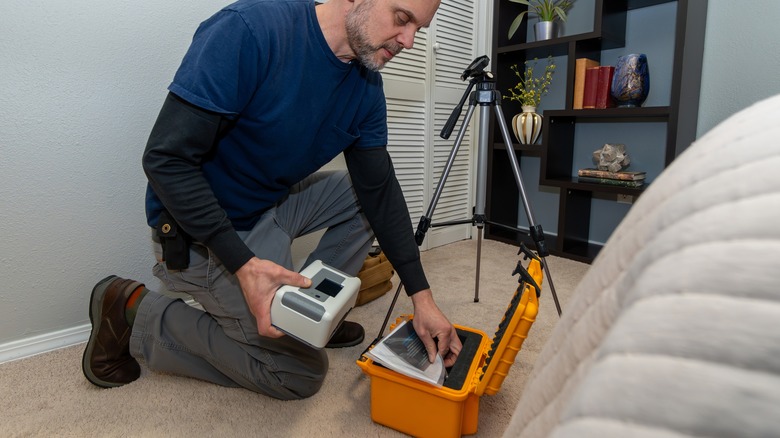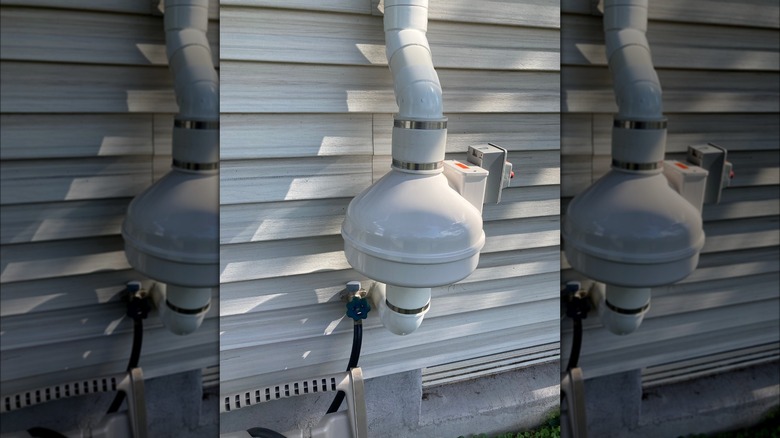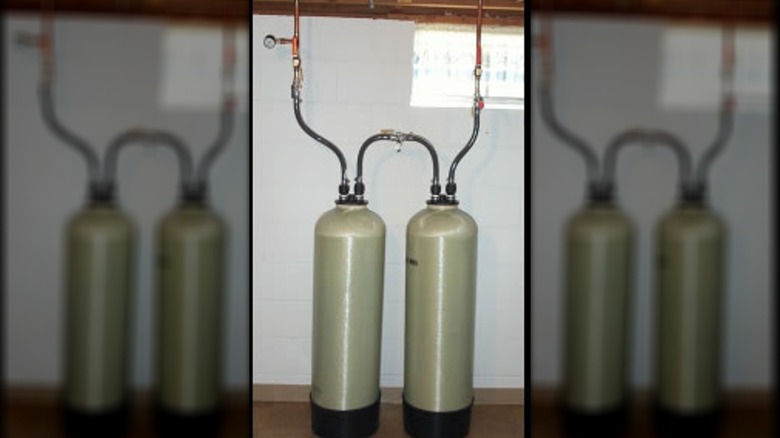Radon: What You Need To Know If It's Present In Your Home
A sweet-smelling home can deceive you into thinking everything's okay when it isn't. Radon gas, a product of decaying radioactive uranium in your soil, bedrock, or groundwater, has become a scourge affecting 1 in every 15 households (per the University of Georgia). Unlike other gas leaks that sometimes leave your home with a bleach-like smell, radon is an odorless, tasteless gas with no tell-tale signs. You can only confirm its presence by testing. (Kits are available at most home centers.) Concentrations exceeding 4 picocuries per liter of air call for immediate remediation. However, the EPA recommends taking measures when radon levels surpass 2 picocuries per liter of air.
Slipping through foundation cracks, wall cavities, service pipe leakages, construction joints, and crawl spaces, radon gas builds up indoors, diminishing air quality. While the effects aren't apparent immediately, persistent exposure may cause lung cancer. The EPA believes radon kills over 21,000 people annually. If you, like 43 million others, use water from private wells for drinking, showering, washing dishes, or laundry, you risk contracting cancers of the stomach and other organs if radon concentration tops 10,000 picocuries per liter (equalling 1 picocuries per liter in air). Luckily, several inexpensive methods will bring radon to relatively safer levels.
Treating radon in indoor air
The U.S. Department of Housing and Urban Development (HUD) extols the benefits of natural ventilation (by running fans or keeping windows or vents open) for reducing radon concentration. It also recommends caulking all cracks and crevices in basements, walls, and lower floors to block all entryways for the carcinogenic gas. However, sealing isn't sufficient and must be complemented with radon reduction systems, such as sub-slab depressurization systems, for a greater impact. Radon reduction systems also reduce the outflow of the conditioned air.
Comprising an exhaust fan and a few PVC pipes, sub-slab depressurization systems vacuum the radon-heavy air beneath the residence's concrete slabs through a vent installed over the building's eaves. In crawl spaces or gravel floors, sub-membrane depressurization systems using a combination of plastic sheets and ventilation piping work better. Although noisy, both systems are durable, lasting years without much maintenance. They are easy to install and cost about $1,200 but incur running (electricity) costs. However, it's best to contact certified contractors to specify home-specific solutions. Your state radon program can help with such information. Also, don't forget to test radon levels the day after the installation and anytime you renovate your home or change the HVAC system.
Reducing water's radon concentration
If your indoor air shows signs of elevated radon levels, chances are your private water well is a factor and must be tested. Depending on the severity, you can opt for point-of-use or whole-house (point-of-entry) systems to reduce radon levels. Point-of-use systems are localized solutions that use carbon filters to remove radon from critical high-use spots such as kitchen taps. Conversely, whole-house systems treat the entire water supply, yielding greater benefits with a price to match.
Generally, the EPA advocates using aeration units for whole water supply treatment because they eliminate almost 99.9% of radon. They pass large volumes of air through the water until it's agitated enough to release the harmful gas. The waste air is shunted through a vent while the clean water is repressurized. However, they can cost between $3,000 and $5,000. Moreover, if your water has high levels of manganese or iron, it must be pretreated before you tackle radon. Although some prefer using granular activated carbon (GAC) units as whole treatments (they're priced cheaper at $2,000), they are unfit where radon concentration is higher than 30,000 picocuries per liter. Also, the unit may eventually turn radioactive, raising risk, although removing the filter annually may keep that in check. The downside is you'll need pros to dispose of the used filters.


